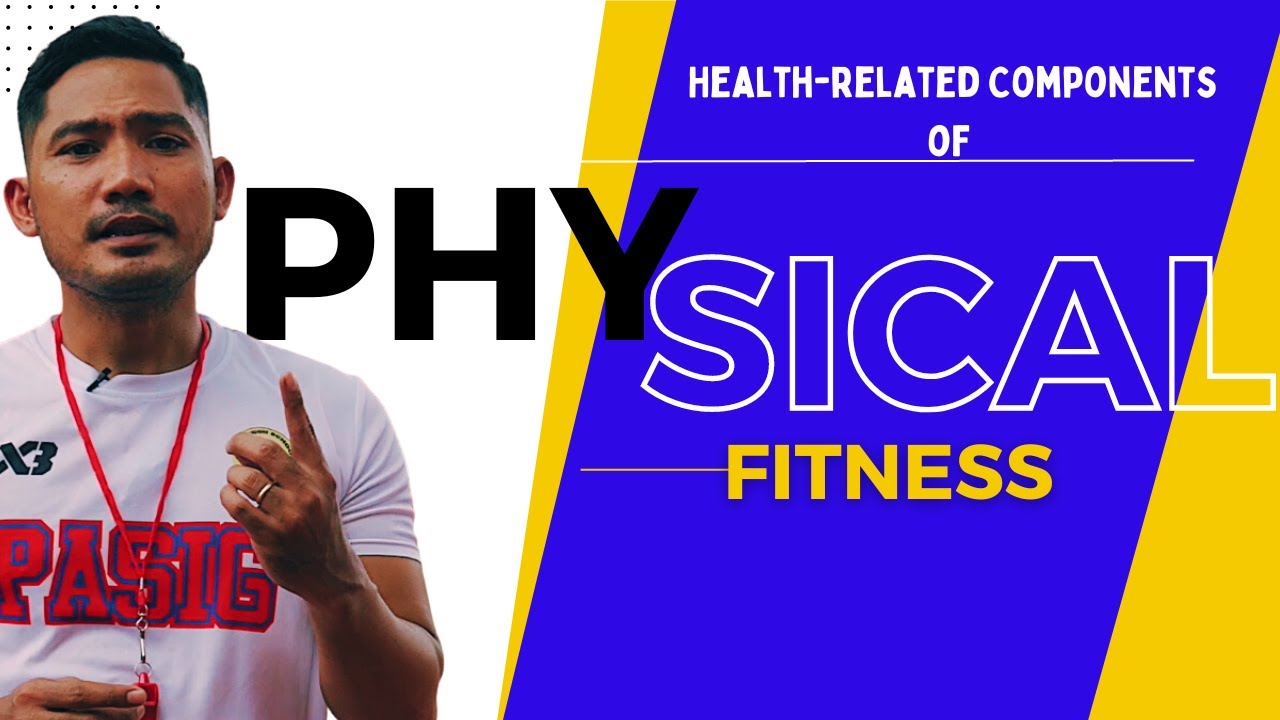💟 (PE) What is a Health-Related Physical Fitness Test? | #iQuestionPH
Summary
TLDRThe video script discusses the concept of health-related physical fitness, emphasizing its five key components: cardiovascular endurance, muscular endurance, muscular strength, flexibility, and body composition. It explains how each component contributes to overall health and how specific exercises can enhance them, such as aerobic activities for cardiovascular endurance and strength training for muscular strength. The script also highlights the importance of good body composition for preventing health issues.
Takeaways
- 🏃♂️ Health-related physical fitness tests focus on factors that promote optimal health and prevent inactivity-related diseases.
- 💪 Health-related fitness involves exercises to improve and maintain physical health.
- 🏅 The five key components of health-related fitness are cardiovascular endurance, muscular endurance, muscular strength, flexibility, and body composition.
- ❤️ Cardiovascular endurance measures the ability of the heart and lungs to work together during prolonged physical activity, improved through aerobic exercises like swimming and jogging.
- 🔄 Muscular endurance is the ability of muscles to repeatedly exert force, and it can be improved through exercises like cycling, sit-ups, and push-ups.
- ⚖️ Muscular strength refers to the ability to lift heavy objects for a short duration, improved by strength training like weight lifting.
- 🧘♂️ Flexibility is the range of motion of joints, and improved flexibility leads to better posture and mobility, enhanced by stretching and yoga.
- 📊 Body composition describes the percentages of fat, bone, water, and muscle in the body, and a healthier composition means more muscle and less fat.
- 📐 Body composition can be measured using formulas such as body mass index (BMI), body fat ratio, and waist-to-hip ratio.
- 💡 Each component of fitness plays a vital role in overall health, helping prevent diseases and improve quality of life.
Q & A
What is the primary focus of health-related physical fitness?
-Health-related physical fitness focuses on factors that promote optimum health and prevent the onset of disease and problems associated with inactivity.
What types of activities are involved in health-related physical fitness?
-Health-related physical fitness involves exercise activities aimed at improving physical health and maintaining overall well-being.
What are the five components of health-related physical fitness?
-The five components are cardiovascular endurance, muscular endurance, muscular strength, flexibility, and body composition.
How is cardiovascular endurance defined, and what exercises can improve it?
-Cardiovascular endurance is the ability of the heart, lungs, and cardiovascular system to function together during extended physical activities. Exercises such as swimming and jogging can improve cardiovascular endurance.
What is muscular endurance, and how can it be tested?
-Muscular endurance is the ability of a muscle to repeatedly exert force against resistance. It can be tested using exercises like cycling, sit-ups, push-ups, and step machines.
What is the difference between muscular endurance and muscular strength?
-Muscular endurance refers to the ability to repeatedly exert force, while muscular strength is the ability to lift and move objects with maximum force for a short period of time.
How can muscular strength be improved?
-Muscular strength can be improved by engaging in regular strength training exercises, such as weight lifting.
What role does flexibility play in physical fitness?
-Flexibility refers to the range of motion of a joint or sequence of joints. Good flexibility allows for better movement and posture, while poor flexibility limits joint motion.
What exercises are recommended to improve flexibility?
-Stretching exercises and yoga can help enhance an individual's flexibility.
Why is body composition important in physical fitness?
-Body composition is important because it describes the percentages of fat, bone, water, and muscle in the body. A healthier body composition involves more muscle and less fat, which can impact overall health.
How can body composition be measured?
-Body composition can be measured using various formulas such as body fat ratio, body mass index (BMI), or waist-hip ratio.
Outlines

This section is available to paid users only. Please upgrade to access this part.
Upgrade NowMindmap

This section is available to paid users only. Please upgrade to access this part.
Upgrade NowKeywords

This section is available to paid users only. Please upgrade to access this part.
Upgrade NowHighlights

This section is available to paid users only. Please upgrade to access this part.
Upgrade NowTranscripts

This section is available to paid users only. Please upgrade to access this part.
Upgrade NowBrowse More Related Video

Grade 8 PE & Health Q1 Ep 1 Go For Fitness Goal

P.E. (1st Quarter) Module 1 Lesson

Health-related components in Physical Fitness

Components of physical fitness

The 5 Components of Health Related Physical Fitness | A Summary Overview |

Physical Fitness Components (HRF and SRF) | Physical Education 7 8 9 10 - 1st Quarter | Maam CJ
5.0 / 5 (0 votes)